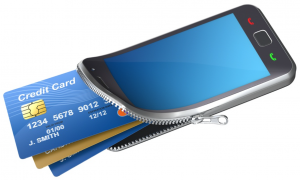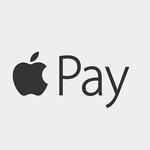
Even those who still rely on cash or plastic when they shop may soon succumb to the newer, more efficient digital wallets that are being offered by the tech companies.
Store-issued credit cards and store rewards programs are coming via Apple Pay and it really gets into the mobile payment services it began last fall. Google is standing by with a similar service that will enhance its smartphone options to run on its Android software. Samsung has in store for its newest Galaxy smartphones a service that it says will be accepted in more stores than either the Apple Pay or Android Pay.
The goal, according to company spokespersons, is to replace the standard wallet.
The improvements are almost ahead of the demand. Last year, some 16 million Americans used smartphones to pay for about $3.5 billion in store purchases, says eMarketer, a shopping research firm. The total includes Apple Pay purchases, PayPal and merchant-sponsored options from Starbucks, Dunkin’ Donuts and others.
Sounds big, but it’s just a small part of the $4.3 trillion Americans spent in stores last year. The researcher group expects that the digital wallet component will grow to $27.5 billion in 2016 as the option catches on with more shoppers.
The move to digital pay has been slowed by failure among the major tech providers to agree on technical standards, security measures and financial terms. And some large merchants have balked, saying they would prefer to develop their own systems.
Despite the roadblocks, Apple Pay made inroads when it was endorsed by major banks and retail firms. The system only works on the latest models of iPhones and Apple Watch. Users create a link to their iPhone with a credit card or bank account. When that has been accomplished, the user just has to hold the phone next to a device on the store counter to make a transaction. The phone and the counter device communicate wirelessly, with the purchaser authorizing payment by pressing the phone’s fingerprint sensor. No card to swipe. The user’s financial information is protected by encrypted codes.
Apple’s next update will facilitate credit purchases and allow purchasers to tap into loyalty points at major stores where they routinely shop. Agreements between the phone providers and popular shopping spots such as Walgreens will add options. Walgreens expects that in the near future, more customers will pay with smartphones or watches to tap into the stores’ Balance Rewards program. They will be able to use their loyalty points with Apple Pay. J.C. Penney stores also are banking on many iPhone shoppers opting into their store-label credit cards. The in-store credit card already is snagging more transactions than any other payment card. Customers earn points with each transaction.
Google, which has struggled to compete in the digital wallet arena, believes it will gain ground with the introduction of Android Pay, due to be released this year. Google will add store rewards, but does not plan to work with store credit cards, at least initially.
Not to be left behind in the race to digital wallet pay, Samsung Pay will also be released this fall. Its technology will work with traditional store credit card readers. Stores initiating the services from other tech companies have to invest in equipment to receive data.
The move obviously is on and pay-by-phone is here to stay.

